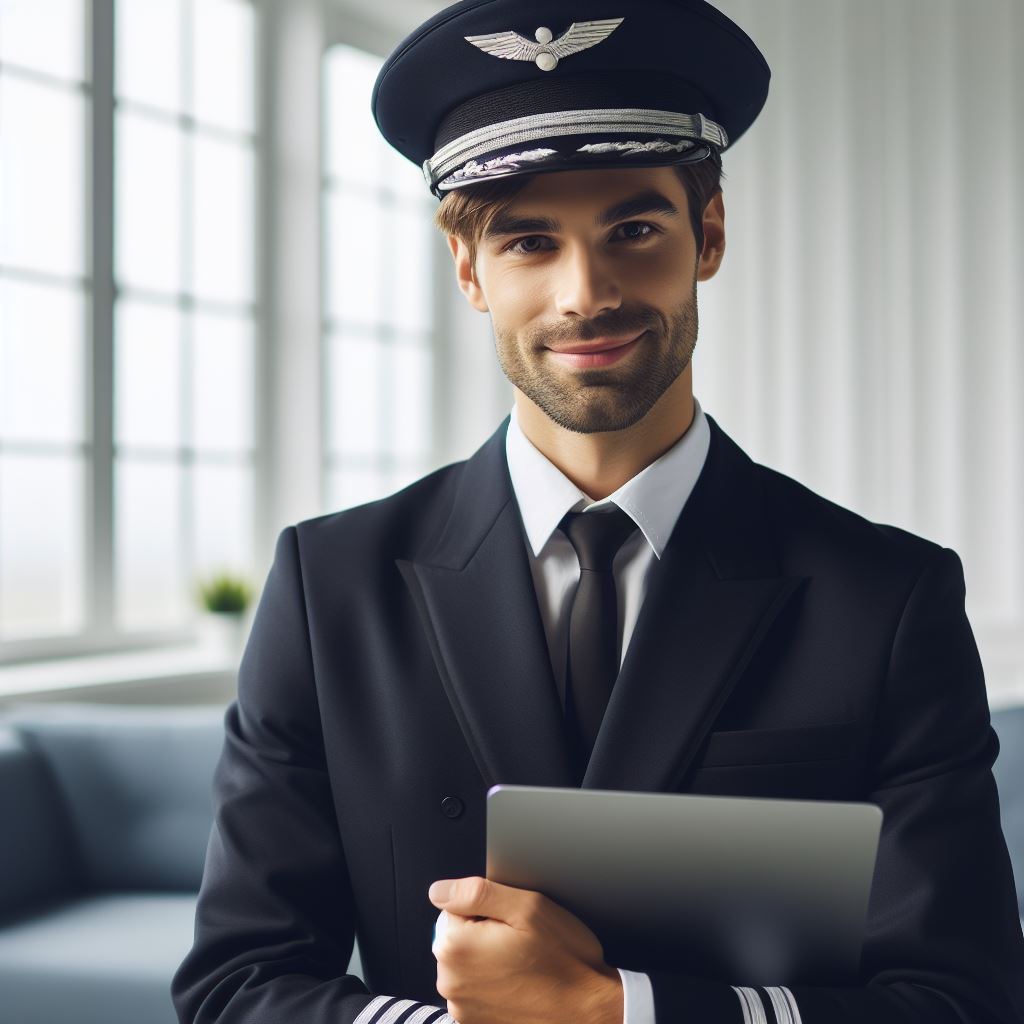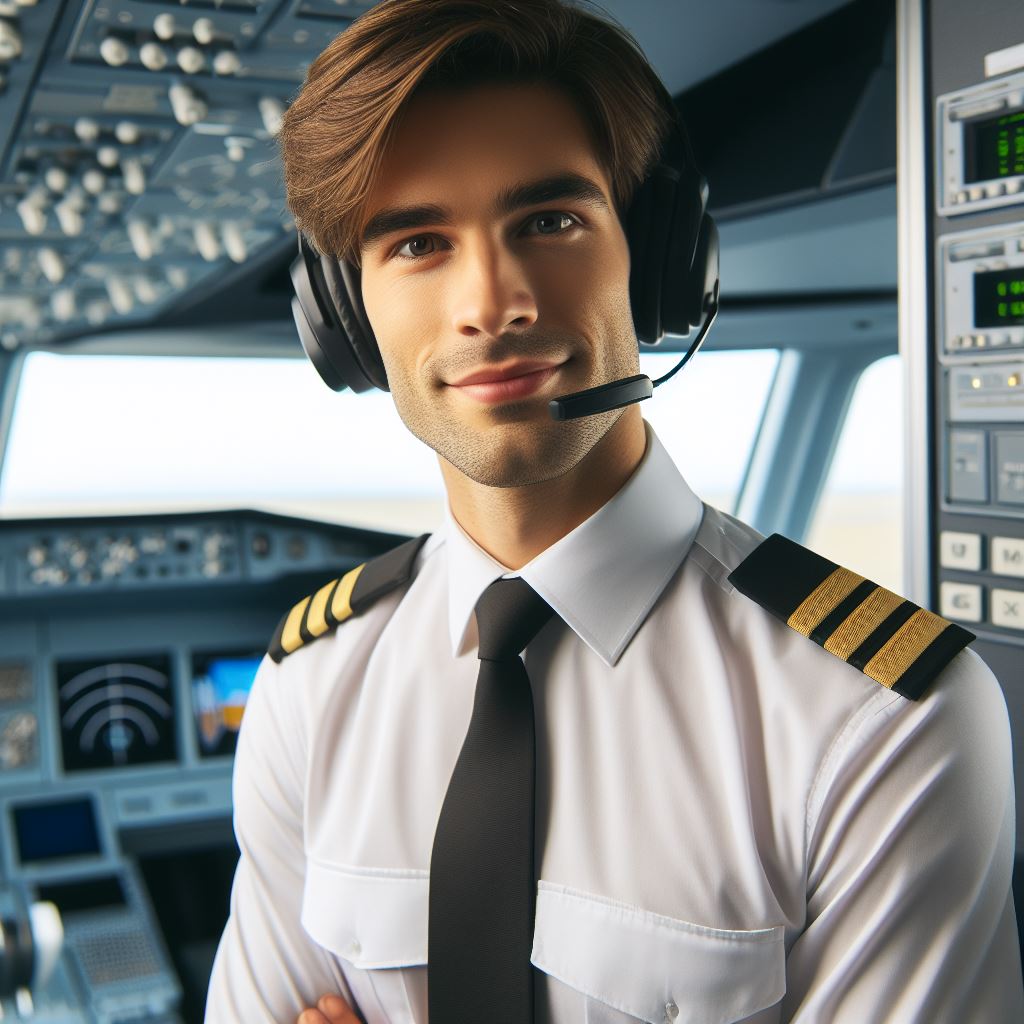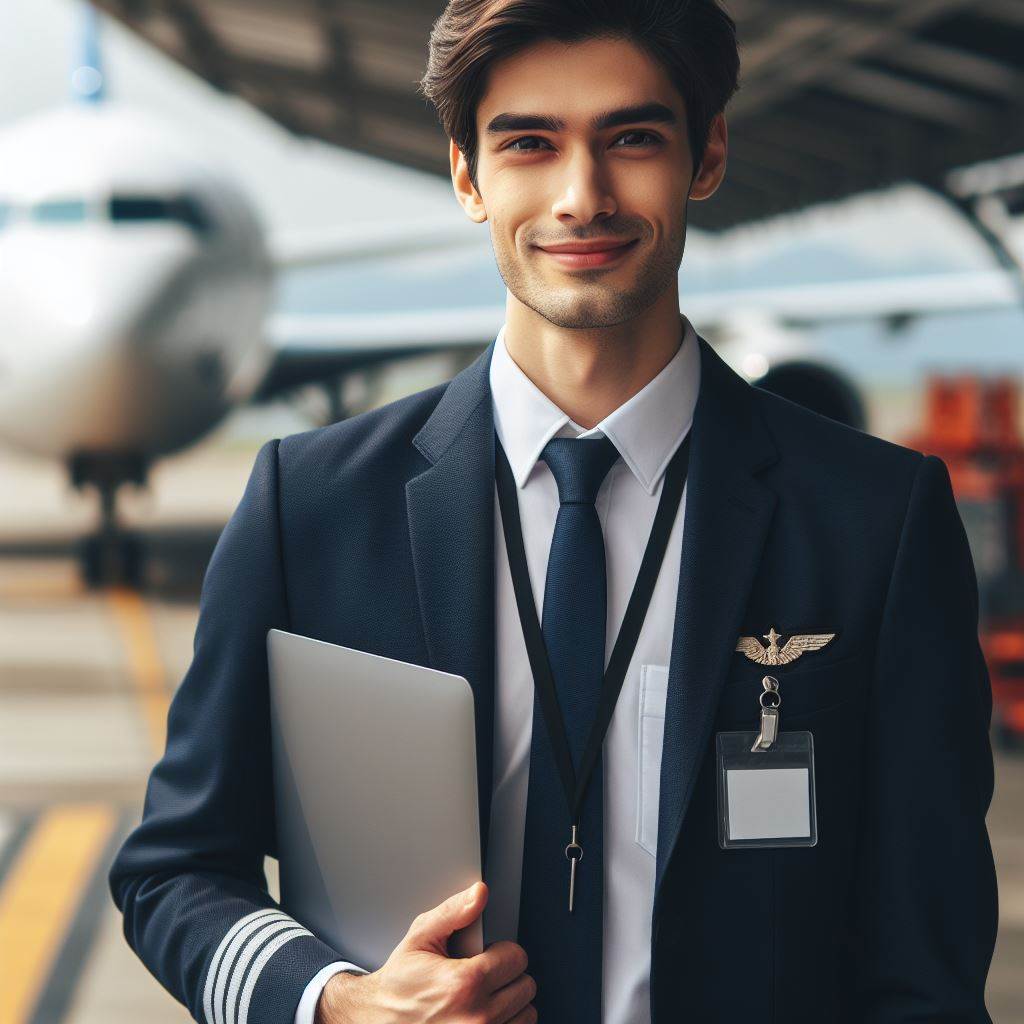Introduction
We’ll explore the daily routine of a Kiwi pilot, highlighting their tasks, challenges, and experiences in the cockpit.
A Kiwi pilot’s role is crucial, requiring precision and focus.
This blog explores a typical day’s rhythm, highlighting the significance of routine and organization in aviation.
A. Role of a Kiwi Pilot
Kiwi pilots play a vital role in New Zealand’s aviation industry, ensuring safe and efficient flight operations.
They are responsible for operating aircraft, following strict safety protocols, and ensuring passenger comfort.
B. Overview of the Blog Post
This blog post provides an inside look at the daily routine of a Kiwi pilot.
It will cover key aspects such as pre-flight preparations, in-flight responsibilities, and post-flight procedures.
C. Importance of Routine and Organization
Routine and organization are critical in the aviation industry to ensure safety and efficiency.
Pilots adhere to strict schedules, checklists, and protocols to maintain order and mitigate risks.
A well-organized routine helps pilots manage tasks effectively and make quick decisions in challenging situations.
Stay tuned for an in-depth exploration of a Kiwi pilot’s daily routine, from sunrise to sunset.
Morning Routine
A. Wake up time and preparations
The day begins promptly at 5:30 am, as the Kiwi pilot is stirred from slumber by the insistent buzz of his alarm.
With a burst of energy, he swings his legs over the side of the bed, eager to embrace the day ahead.
As he stretches, the anticipation of what lies ahead invigorates him, setting the tone for the morning.
B. Breakfast and review of flight plans
After a quick yet refreshing shower, the pilot makes his way to the kitchen, where the aroma of freshly brewed coffee fills the air.
Personalized Career Consulting
Unlock your potential with expert career advice tailored to your goals. Get personalized guidance and actionable steps toward your dream career in New Zealand.
Get StartedBreakfast is a simple affair – perhaps some toast and eggs, accompanied by a generous serving of fruit.
As he eats, he pores over his flight plans, meticulously reviewing every detail to ensure a smooth journey ahead.
Each sip of coffee fuels his focus, sharpening his mind for the tasks ahead.
C. Pre-flight checks and preparing the aircraft for departure
With breakfast finished and his mind fully engaged, the pilot gathers his belongings and makes his way to the hangar.
The morning sun casts a warm glow over the tarmac as he approaches his aircraft, a sleek and powerful machine waiting patiently for its next adventure.
With practiced ease, he conducts his pre-flight checks, methodically inspecting every inch of the aircraft to ensure it is in perfect working order.
His movements are deliberate and precise, a testament to his years of experience and dedication to safety.
D. Kiwi pilot’s excitement and anticipation for the day ahead
With each completed check, the pilot’s excitement grows.
Today’s flight promises new experiences and challenges, a chance to explore the vast beauty of New Zealand’s landscapes from a perspective few ever get to see.
As he prepares to climb into the cockpit, he can’t help but smile, the thrill of flight coursing through his veins.
It’s a feeling that never gets old, no matter how many times he takes to the skies.
With a sense of purpose and determination, he straps himself in, ready to embark on another unforgettable journey as a Kiwi pilot.
Read: NZ Airline Pilot Paths: Your Complete Guide
Flight Operations
Today, we will take a closer look at the demanding routine of a Kiwi pilot.
Transform Your Career with a Professional CV and Cover Letter
Stand out to employers with an ATS-optimized resume and tailored cover letter designed to match your dream role. Let us craft your job application materials for success!
Get StartedFrom the moment they wake up until they land, their day is filled with challenges and responsibilities.
Let’s explore the flight schedule, different routes, and destinations they encounter.
A. Flight Schedule Overview
The day begins with a thorough review of the flight schedule.
Pilots examine each flight’s departure time, duration, and destination.
This information allows them to plan and prepare effectively for the day ahead.
Every flight is unique, and pilots must adjust their mindset to meet the demands of each journey.
From short domestic flights to long-haul international trips, their schedules are diverse and dynamic.
B. Different Flight Routes and Destinations
- Domestic Routes: Kiwi pilots often operate short-haul flights within New Zealand, connecting various cities and regions.
These flights provide an opportunity to explore their own beautiful country while gaining valuable experience. - Trans-Tasman Routes: Flying across the Tasman Sea, Kiwi pilots frequently transport passengers to Australia.
These flights require meticulous planning, as pilots must navigate different airspaces and adhere to specific regulations. - International Routes: Pilots also fly to a variety of international destinations, including Asia, Europe, and North America.
These long-haul flights demand focus, endurance, and the ability to adapt to different time zones.
C. Challenges and Responsibilities During Flights
Kiwi pilots face numerous challenges and responsibilities throughout their flights.
Let’s explore some of the most significant aspects:
- Safety: The safety of passengers and the aircraft is the pilot’s top priority. They must constantly monitor weather conditions, air traffic, and systems to ensure a smooth and secure journey.
- Decision Making: Pilots make critical decisions during flights, such as altering the flight path due to weather conditions or addressing technical issues. These decisions require quick thinking and sound judgment.
- Communication: Effective communication is essential for pilots. They regularly liaise with air traffic controllers, cabin crew, and passengers to provide updates and address any concerns or emergencies.
- Teamwork: Pilots work closely with their co-pilots, cabin crew, and ground staff to ensure seamless operations.
Teamwork is vital in managing unexpected events and ensuring a comfortable and enjoyable flight for everyone on board. - Continuous Learning: Kiwi pilots are committed to continuous learning and improvement.
They stay updated on the latest industry practices, regulations, and technologies to enhance their skills and stay ahead in this dynamic field.
In fact, a day in the life of a Kiwi pilot is an intense and fulfilling journey.
From planning the schedule to navigating various routes, their responsibilities encompass safety, decision making, communication, teamwork, and continuous learning.
These passionate individuals ensure that passengers reach their destinations safely and efficiently.
Read: Supply Chain Education & Training in NZ
In-flight Tasks
As a Kiwi pilot, my duties during the flight are crucial for a safe and comfortable journey.
Boost Your Career with a Standout LinkedIn Profile
Attract recruiters and expand your network with a fully optimized LinkedIn profile tailored to highlight your strengths and professional goals. Let your profile open doors to new opportunities!
Get OptimizedLet me walk you through what I do in the skies.
A. Ensuring Passenger Safety and Comfort
- Before takeoff, I conduct a thorough safety briefing, ensuring passengers are aware of emergency procedures.
- Throughout the flight, I continuously monitor cabin conditions to ensure a comfortable environment for passengers.
- If any turbulence or other disturbances occur, I promptly communicate with passengers and provide reassurance.
- I also double-check that all safety equipment, such as life vests and oxygen masks, is in place and fully functional.
- Should any medical emergencies arise, I coordinate with flight attendants to provide necessary assistance.
B. Flight Progress and Communication
- During the flight, I closely monitor flight progress, ensuring we are on the correct course and altitudes.
- I communicate with air traffic control, following their instructions for a smooth journey and proper airspace management.
- Weather conditions are constantly on my radar. I continuously assess and adjust our flight path to avoid hazards.
- If there are any deviations due to weather or other factors, I inform both air traffic control and passengers promptly.
- Clear and effective communication with the cabin crew is also essential for a well-coordinated flight.
C. Managing Aircraft Systems
- I oversee various critical systems on the aircraft, including navigation, communication, and engine performance.
- Continuous monitoring and analysis of these systems help ensure optimal performance and identify any anomalies.
- If any technical issues arise, I troubleshoot and take necessary actions to resolve them promptly and safely.
- In the event of an emergency, I make quick decisions, following standard procedures to ensure the safety of all on board.
- Maintaining fuel efficiency is also a priority. I calculate and manage fuel consumption throughout the flight.
D. Collaboration with the Crew
- As the captain, I work closely with the first officer and cabin crew, fostering effective teamwork.
- Regular communication with the first officer ensures a shared understanding of flight plans and responsibilities.
- Collaboration with flight attendants helps address any passenger concerns and ensures a positive inflight experience.
- Building rapport and trust within the team enables a smooth and efficient operation in the skies.
In short, the duties of a Kiwi pilot during a flight encompass passenger safety, effective communication, system management, and teamwork.
It is an exhilarating responsibility that requires skill, adaptability, and a commitment to excellence.
Read: Career Path: Supply Chain Mgr in NZ

Lunch Break
The life of a Kiwi pilot is a busy one, filled with early mornings and long flights.
With the demanding nature of their job, it’s crucial for pilots to take breaks in between flights to refuel and rest.
One of these breaks is the lunch break.
A. Brief break between flights to refuel and rest
During the lunch break, pilots have a short period of time to refuel both their aircraft and themselves.
This break allows them to recharge before heading back into the cockpit for the next flight.
It’s a crucial moment to take a breather and reset.
B. Option to grab a bite to eat or relax before the next flight
The lunch break offers pilots the opportunity to grab a quick bite to eat.
Whether it’s a packed lunch from home or a visit to the airport cafeteria, pilots make sure to fuel their bodies with nourishing food to keep their energy levels up.
Alternatively, they may choose to relax and unwind during this time, finding a quiet spot to rest or engage in a favorite activity.
C. Importance of maintaining energy and focus throughout the day
Maintaining energy and focus is crucial for a pilot’s safety and the successful completion of their flights.
The lunch break plays a vital role in ensuring pilots can sustain their energy levels and maintain the focus required to fly an aircraft.
By refueling their bodies and minds during this break, pilots ensure they are ready for the challenges of the rest of the day.
D. Benefits of a lunch break for Kiwi pilots
The lunch break provides numerous benefits for Kiwi pilots, enabling them to perform at their best throughout the day:
- The break allows pilots to rejuvenate and recharge their bodies, reducing fatigue and increasing alertness.
- Giving pilots time to eat nourishing food supports their overall health and well-being.
- Relaxing during the break can reduce stress levels, promoting mental clarity and decision-making abilities.
- A moment to step away from the cockpit helps pilots maintain a work-life balance and prevents burnout.
- During the break, pilots can connect with colleagues, fostering teamwork and camaraderie.
Overall, the lunch break is a valuable time in a Kiwi pilot’s daily routine.
It offers them a chance to refuel, rest, and recharge before taking to the skies once again.
By prioritizing their well-being, pilots ensure a safe and successful journey for themselves and their passengers.
Read: Supply Chain Crisis Mgmt: NZ Focus
Afternoon Routine
After completing the morning routine, the Kiwi pilot moves on to his afternoon tasks.
A. Pre-flight checks for the next flight
The pilot meticulously inspects the aircraft, ensuring that everything is in perfect working order.
He examines the engine, the control surfaces, and the instruments, leaving no room for error.
He double-checks the fuel levels and confirms that all the necessary equipment is on board.
The Kiwi pilot understands that thorough pre-flight checks are crucial for a safe and smooth flight.
B. Communication with cabin crew and ground staff
The pilot communicates with the cabin crew, discussing any special instructions or passenger requests.
He assures them that the flight plan has been carefully reviewed and any potential issues have been addressed.
The Kiwi pilot values effective communication and actively listens to the concerns and suggestions from his team.
He also shares information with the ground staff, updating them on any changes or updates.
C. Kiwi pilot’s meticulousness and attention to detail
The article emphasizes the Kiwi pilot’s reputation for being extremely meticulous and detail-oriented.
His colleagues admire his ability to spot even the smallest issues during pre-flight checks.
They know that he never takes shortcuts and always follows the standard operating procedures to the letter.
Passengers and crew feel confident knowing that their safety is paramount to this Kiwi pilot.
In general, the Kiwi pilot’s afternoon routine involves thorough pre-flight checks, effective communication, and meticulous attention to detail.
His dedication to safety and his commitment to excellence make him a trusted professional in the aviation industry.
Evening Routine
A. Completion of the day’s flights
As dusk descends, the aircraft gracefully touches down, concluding the day’s flights.
The engines wind down, the cabin lights dim, and passengers begin to disembark, their faces reflecting a mix of weariness and contentment.
In the cockpit, the pilot and co-pilot exchange nods, a silent acknowledgment of a job well done.
The atmosphere is one of accomplishment, knowing that each journey was completed safely and efficiently.
Instruments are powered down, controls stowed, and the aircraft settled into its resting place for the night.
With a final check of systems, the pilot steps out into the fading light, ready to transition to the next phase of the evening routine.
B. Debriefing with other crew members and feedback sessions
Gathered in a designated area, the crew comes together for the evening debrief.
The atmosphere is relaxed yet focused, with each member contributing their perspectives on the day’s operations.
Successes are celebrated, whether it be a particularly smooth landing or effective communication with air traffic control.
Challenges are dissected with a keen eye, as the crew seeks to learn from any issues encountered.
Feedback flows freely, with constructive criticism welcomed as an opportunity for growth.
It’s a collaborative effort, with every voice valued in the pursuit of continuous improvement.
As the discussion winds down, the crew disperses, each member carrying with them insights gleaned from the collective experience.
C. Preparation for the next day’s flights, including paperwork completion and flight planning
Retreating to the office, the pilot is greeted by a stack of paperwork awaiting attention.
Logs must be meticulously filled, documenting every detail of the day’s flights.
Maintenance reports are reviewed, ensuring that any issues are addressed promptly.
Schedules are checked and rechecked, with tomorrow’s flights looming on the horizon.
Flight planning tools are fired up, charts unfurled, and routes meticulously mapped out.
Weather forecasts are scrutinized, potential hazards identified, and alternate routes considered.
Fuel calculations are performed, ensuring that each aircraft is adequately provisioned for the journey ahead.
Weight distributions are carefully calculated, with precision essential for optimal performance.
Safety checks are conducted with unwavering attention to detail, leaving nothing to chance.
Communication with air traffic control confirms flight plans, with clearances obtained and airspace restrictions understood.
As the final checks are completed, the pilot signs off on the paperwork, the last task of the evening.
Exiting the office, a sense of readiness pervades, knowing that everything has been meticulously prepared for the challenges that tomorrow may bring.
Free Time & Hobbies
A. How Kiwi pilots spend their free time outside of work
As a pilot, finding time for oneself outside of work is crucial.
Kiwi pilots, despite their demanding schedules, prioritize their free time to pursue various hobbies and interests.
While the nature of their profession requires utmost vigilance and concentration, they manage to strike a work-life balance.
B. Hobbies and interests pilots may engage in
One of the common hobbies amongst Kiwi pilots is exploring the great outdoors.
New Zealand, known for its stunning landscapes, offers a plethora of outdoor activities.
From hiking in the mesmerizing mountains to skydiving from jaw-dropping heights, pilots indulge in adrenaline-pumping adventures during their free time.
Another popular hobby among Kiwi pilots is photography.
With access to breathtaking aerial views and unique perspectives, it’s no surprise that photography has become a passion for many pilots.
They capture the beauty of the landscapes they fly over, immortalizing these moments through their lenses.
Some pilots find solace in creative pursuits such as painting or playing a musical instrument.
These activities provide an escape from the high-pressure environment of the cockpit and allow pilots to express themselves artistically.
Whether painting vibrant landscapes or strumming a guitar, these hobbies bring a sense of peace and fulfillment.
For those seeking a more contemplative pastime, reading and writing often take precedence.
Kiwi pilots immerse themselves in books that span various genres, from aviation classics to gripping novels.
Some even showcase their own writing skills by penning articles or creating blogs, sharing their unique insights and experiences with others.
C. Work-life balance for a Kiwi pilot
While engaging in hobbies is important, maintaining a work-life balance is equally crucial for Kiwi pilots.
They understand the demands of their profession and the necessity of rest and relaxation to perform at their best.
Many find comfort in spending quality time with family and friends, cherishing moments and creating lasting memories.
Being a Kiwi pilot entails more than just flying planes; it encompasses a lifestyle centered around passion and dedication.
By pursuing diverse hobbies and interests, pilots not only recharge their batteries but also enhance their skills and knowledge in different areas.
In a nutshell, Kiwi pilots value their free time and make the most of it.
Engaging in a range of hobbies allows them to unwind, explore their creativity, and maintain a work-life balance.
From adrenaline-filled adventures to peaceful artistic pursuits, pilots find fulfillment outside the cockpit.
Their diverse interests and passions make them well-rounded individuals, enhancing their overall aviation experience.
Conclusion
A. Recap of a typical day in the life of a Kiwi pilot’s routine
- Early start, checking weather and flight plans.
- Pre-flight checks, ensuring aircraft safety.
- Flying multiple legs, navigating New Zealand’s skies.
- Monitoring weather changes and adjusting routes.
- Ensuring passenger comfort and safety throughout.
- Landing, completing post-flight checks and paperwork.
B. Dedication and commitment required for this profession
Being a pilot demands unwavering dedication and commitment.
It requires constant training and staying updated with regulations and technology.
The safety and well-being of passengers and crew depend on it.
C. Encouragement for aspiring pilots to pursue their dreams and embark on this fulfilling career
For those dreaming of soaring the skies, pursue your passion for flying!
With dedication, hard work, and perseverance, you can turn your dream into a rewarding career.
Fly high and fulfill your aspirations!




